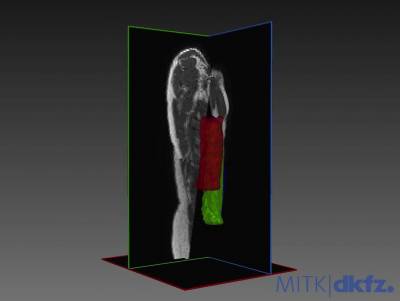Study identifies a way to test regenerative therapies for nerve injury in humans
17 November 2021
An interdisciplinary group of researchers in a study led by UCL have identified a new way to track nerve regeneration in humans using MRI.
Nerve injuries are debilitating, causing loss of movement and sensation and, in many cases, chronic pain and disability. Treatments for nerve injury are limited and improving outcomes for people affected is an important research focus in the field of regenerative medicine.
A wealth of therapies have been shown to improve nerve regeneration in the laboratory but the benefits of these treatments are yet to be seen by patients. A major contributor to this issue is that many of the metrics used to assess nerve regeneration in the laboratory are not feasible to perform in humans for practical reasons.
A team of scientists and clinicians from UCL, KCL, Royal Free Hospital and Royal National Orthopaedic Hospital addressed some of these challenges by following up patients who underwent reconstructive surgery to restore function to the elbow flexor muscles. Measurements of muscle volume using MRI at different times following surgery (figure one) were able to capture and predict improvements in muscle function. This represents an exciting step towards improving human clinical trials of regenerative therapies which have demonstrated promising results in the laboratory.

Figure 1 - 3D reconstruction of elbow flexor muscles 194 (red), 336 (blue) and 553 (green) days post-operatively.
Dr Matthew Wilcox who conducted the study as part of his PhD said “It was fascinating to be able to track the changes in muscle volume as the patients recovered following nerve surgery. This level of monitoring allows regeneration to be studied in humans and importantly provides a way to quantify changes over time.”
Mr Tom Quick, consultant nerve surgeon who led the study said “Being able to measure the extent to which nerve regeneration has resulted in muscle recovery following surgery in this way is valuable both in terms of clinical decision making to improve patient care, and also as an outcome measure that will enable future clinical trials of new therapies”
Professor James Phillips, co-Director of the UCL Centre for Nerve Engineering who was also involved in the project said “It is great to see this important new approach being published. This study involved a diverse team working collaboratively to establish a sensitive new method for measuring nerve repair. It will help us to translate new therapies from the lab to the clinical environment.”
For further information visit:
www.nature.com/articles/s41598-021-01342-y
www.nerve-engineering.ucl.ac.uk/
To contact UCL's Centre for Nerve Engineering please email: cne@ucl.ac.uk
 Close
Close

